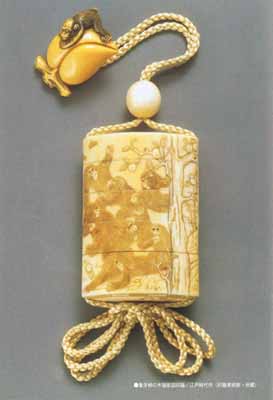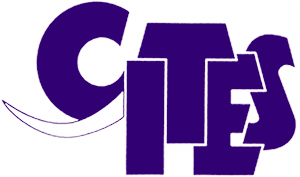Attention in preservation
As for the personal ornament, it is unnecessary for the special attention.However, about the comparatively big ornament, "It sometimes cracks when temperature is changed suddenly." Though there is no anxiety that it cracks in usual japanese home,but,when it is cold in winter,it sometimes cracks,when getting hot the room too much with the stove or the steam,and a window is opened and cold air is put into the room suddenly.
Though it says ivory fractures,when it is put on the tatami,or,having it and goes into the wood of the bamboo. As for this,the tatami in winter is cold and it is chilly in the wood of the bamboo in summer. In other words,it is considered meaning that ivory crack possibility when temperature is changed suddenly. When an ivory product became dirty, It can be washed clean with brush which put soap, by the tepid water. And dry it in the shade. Not drying it by the wind and never drying it on the fire is the most important.
History about the Japanese ivory carving
Toyotomi Hideyosi was using the tea set of the ivory craft, too.
The ivory craft has been transmitted from the old days Nara Period

●The seal basket of the tree monkey carving
figure of the ivory persimmon/Edo Period work
(Seal basket museum collection)
When was ivory conveyed to Japan on earth?Ivory had already been contained in“KOU GA BATI RU SYAKU”and so on,the treasure of the SHOSOIN,in the Nara Period (the eighth century),and ivory was transmitted in those days.
From this fact,it is considered that technological know-how was also acquired in Japan,and combs and so on were being made.
After that, in the Azuchi-Momoyama Period,it was used for the utensils of tea and so on abundantly. It also showed big technological development, following in trade with the Southeast Asia and China becoming prosperous.In that,it can be seen the state that ivory was used for the various tea sets from “sea gull eggplant with TOU MONO TYA”,which is transmitted that Toyotomi Hideyosi owned it,and 「RIKYUU HYAKU KAI KI」,which SENRIKYUU wrote it,and so on.
And,in the early stages of the Edo Period,NETUKE,Seal basket,comb,ornamental hairpin and so on generalizes as a daily life article.From the 17th century latter half, until about the 18th century first half,much ivory craftwork was used preferably by military familys and civilians.
that craft technology invited a prosperity term as the ivory carving in the Meiji, Taisho Period, and produces a lot of famous craftsman. Those many craft works of art were exported to the foreign countries as well, and got high evaluation. That excellent tradition craft technology that it is cultivated in the long time is recognized as the artistic carving goods worldwide, and succeeded to to the present.
※KOU GA BATI RU SYAKU…polish ivory first,and paint that surface by the color such as rouge, dark blue, green.
The technological know-how which carved a pattern on this and which intended effect on comparison with white.The ruler which this technological know-how was used for.
